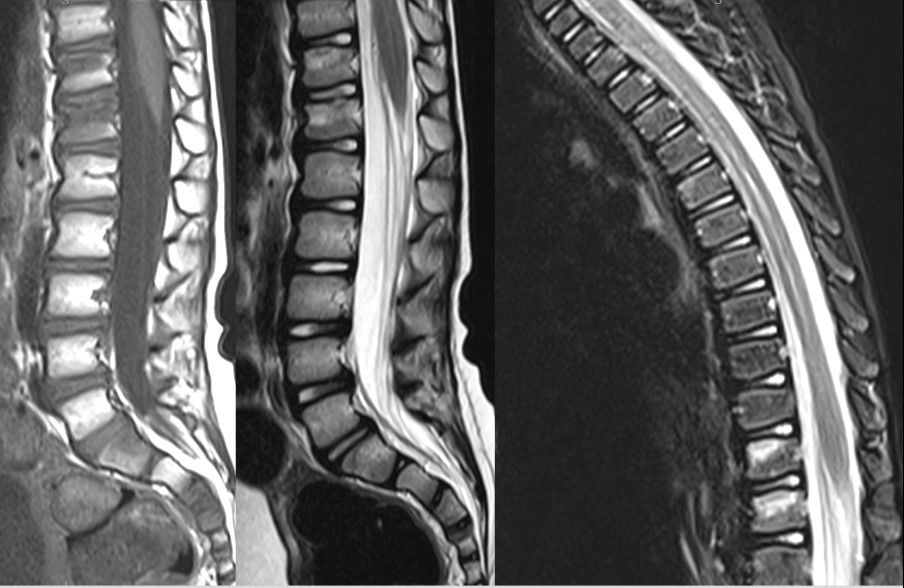Chronic recurrent multifocal osteomyelitis: A challenging diagnosis
DOI:
https://doi.org/10.46900/apn.v6i3.258Keywords:
chronic recurrent multifocal osteomyelitis, chronic nonbacterial osteomyelitis, tethered cord, back pain, syringomyelia.Abstract
Introduction. Chronic recurrent multifocal osteomyelitis (CRMO) is a pediatric autoinflammatory disorder that is characterized by multiple sterile inflammatory bone lesions with a relapsing and remitting course. CRMO belongs to the autoinflammatory family of rheumatologic disorders based on absence of significant titers of autoantibodies and autoreactive T-lymphocytes. In absence of pathognomonic clinical, radiographic or pathological features, diagnosis can be challenging.
Case presentation. We report an unusual case of a 3-year-old girl presenting back pain, neurogenic bladder and syringomyelia. A tethered cord was diagnosed and treated, improving urinary function. Despite the surgical treatment, back pain was persistent. A whole body MRI showed multiple lesions compatible with chronic recurrent multifocal osteomyelitis.
Conclusion. CRMO shares imaging features with other diseases. It is important for neurosurgeons and radiologists to be able to differentiate other diseases from CRMO because prognosis varies from completely benign to frankly malignant.
Downloads

Downloads
Published
How to Cite
Issue
Section
License
Copyright (c) 2024 Tatiana Protzenko, Clara Magalhães Paiva, Marcelo Pousa, Antonio Bellas

This work is licensed under a Creative Commons Attribution 4.0 International License.

When publishing in Archives of Pediatric Neurosurgery journal, authors retain the copyright of their article and agree to license their work using a Creative Commons Attribution 4.0 International Public License (CC BY 4.0), thereby accepting the terms and conditions of this license (https://creativecommons.org/licenses/by/4.0/legalcode).
The CC BY 4.0 license terms applies to both readers and the publisher and allows them to: share (copy and redistribute in any medium or format) and adapt (remix, transform, and build upon) the article for any purpose, even commercially, provided that appropriate credit is given to the authors and the journal in which the article was published.
Authors grant Archives of Pediatric Neurosurgery the right to first publish the article and identify itself as the original publisher. Under the terms of the CC BY 4.0 license, authors allow the journal to distribute the article in third party databases, as long as its original authors and citation details are identified.





























